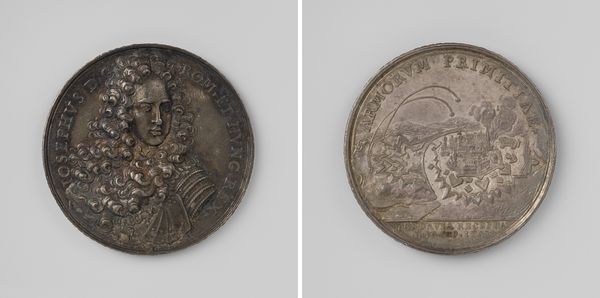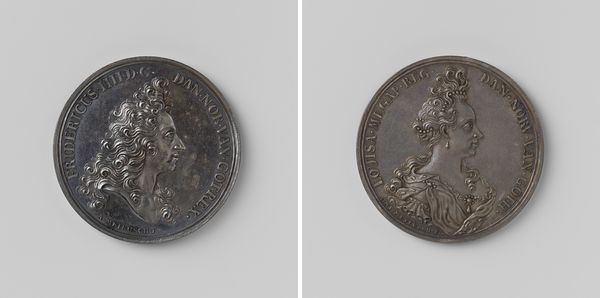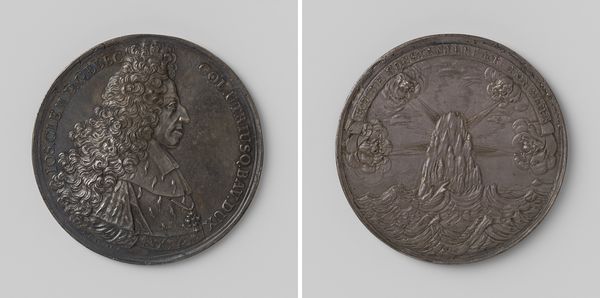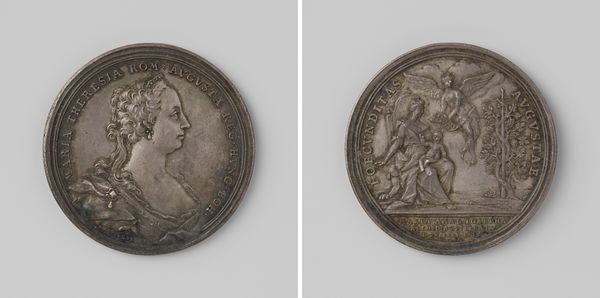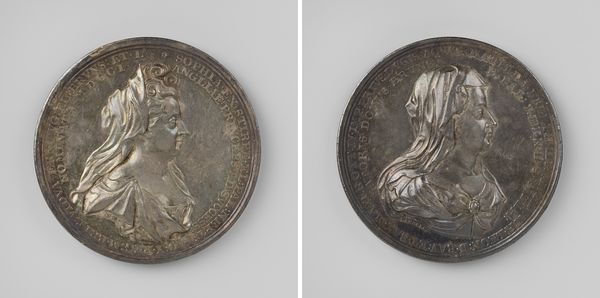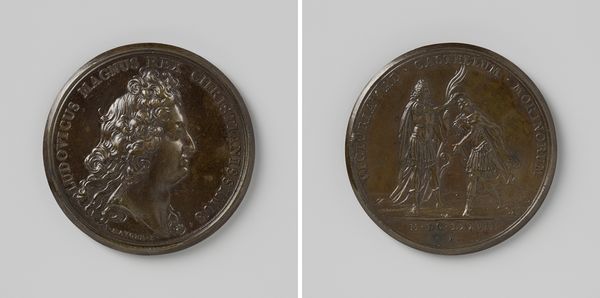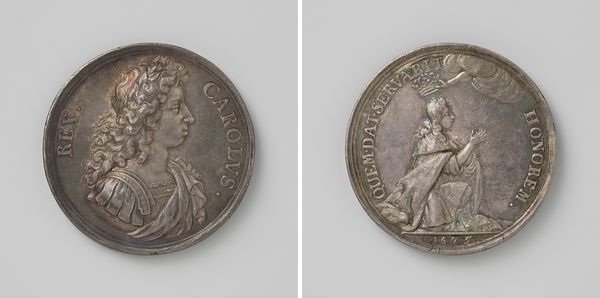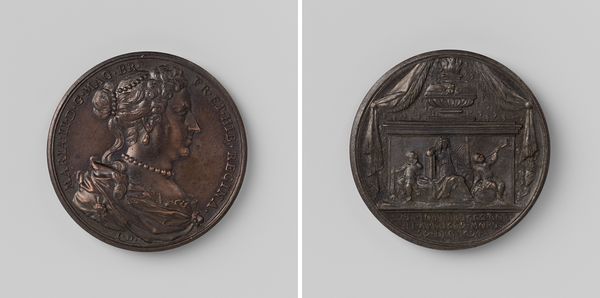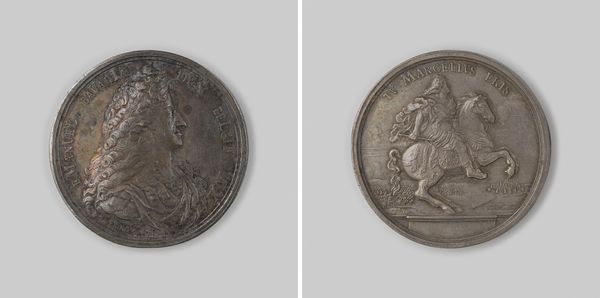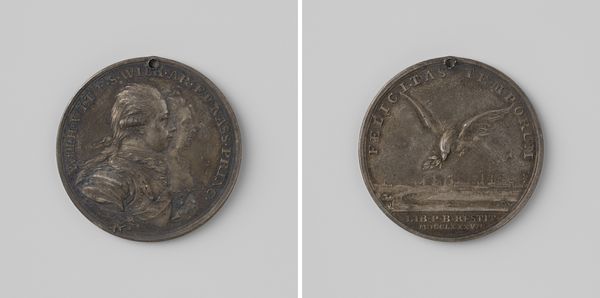
Inname van Memingen door Maximiliaan II Emanuel, keurvorst van Beieren 1702
0:00
0:00
metal, relief, sculpture
#
baroque
#
metal
#
sculpture
#
relief
#
sculpture
#
history-painting
Dimensions: diameter 4.2 cm, weight 28.62 gr
Copyright: Rijks Museum: Open Domain
Editor: This is a medal, “Inname van Memingen door Maximiliaan II Emanuel, keurvorst van Beieren,” made in 1702 by Philipp Heinrich Müller. The medal is split into two scenes; one side shows a regal figure in profile and the other is a depiction of what I presume is the 'taking' of Memingen. I am curious, what aspects of this piece catch your attention? Curator: The act of memorializing a military victory on a medal in 1702 speaks volumes about power, propaganda, and identity construction within Baroque society. This wasn’t just about recording history; it was about crafting a narrative that legitimized Maximilian II Emanuel's authority and projected an image of strength and dominance. Consider how this piece intersects with the rise of absolutism. Editor: That's interesting. It is definitely Baroque in style. Can you say more about its relationship with the absolutist movement? Curator: Think about it: How does commissioning a commemorative medal showcasing military triumph reinforce a ruler's absolute authority? What social and political dynamics are at play when a ruler like Maximilian II Emanuel invests in artistic endeavors to celebrate and solidify his power? These medals become instruments to disseminate political messages. This act of creating a metal artifact serves as a tool to shape collective memory, constructing Maximilian II Emanuel's legacy as a conquering hero, a legacy built on power dynamics. It compels us to question: Whose voices are amplified through art and whose are marginalized or erased? Editor: That's a great perspective. So much more than just documenting an event. Curator: Precisely! Examining the social and historical context empowers us to recognize the nuanced ways in which art perpetuates or challenges power structures. These objects are complex negotiations, reflective of both the intentions of the patron and the broader societal forces at play. What do you take away from that, now? Editor: Thinking about this as more of a deliberate message than just an artifact shifts how I perceive art of this period. Thanks for your insight!
Comments
No comments
Be the first to comment and join the conversation on the ultimate creative platform.
